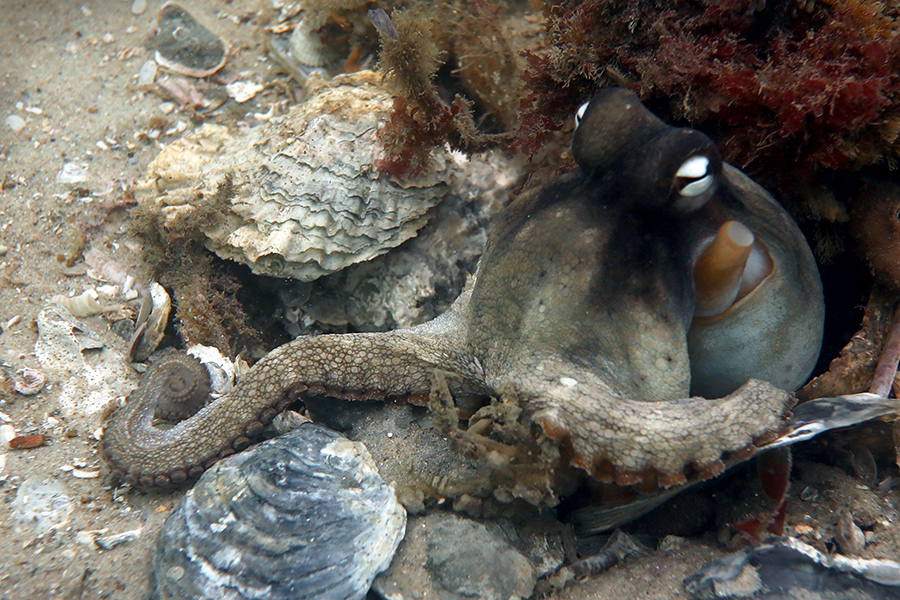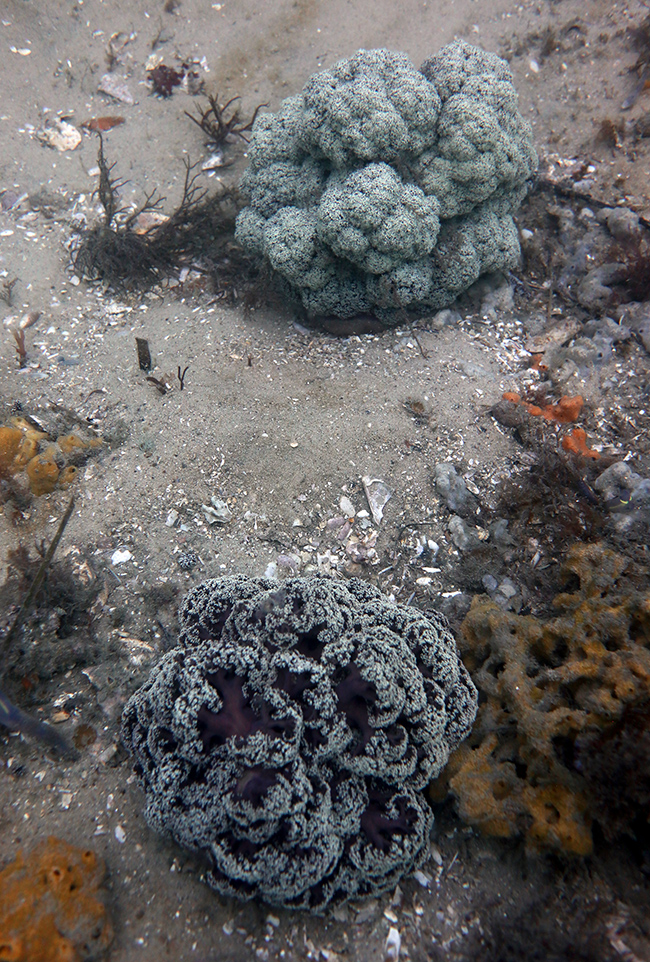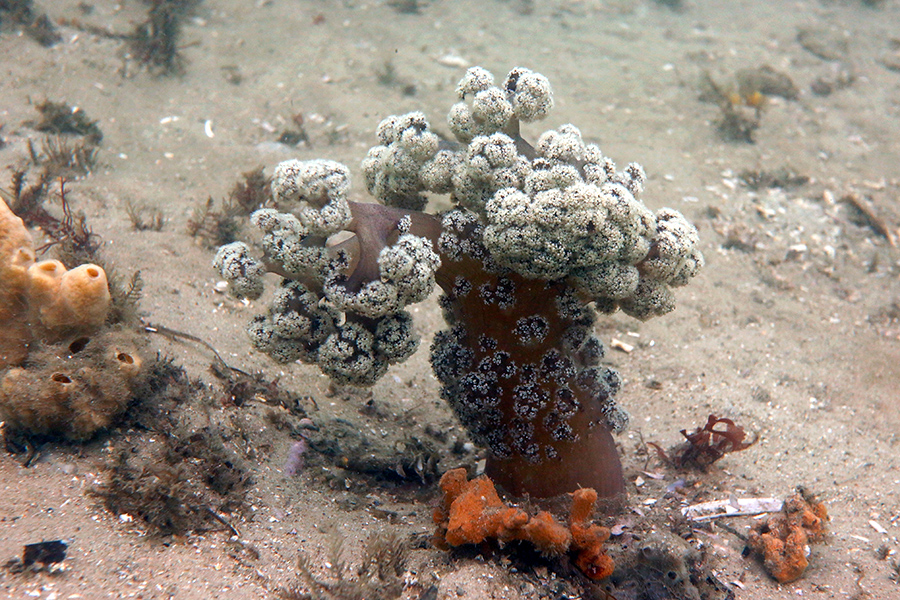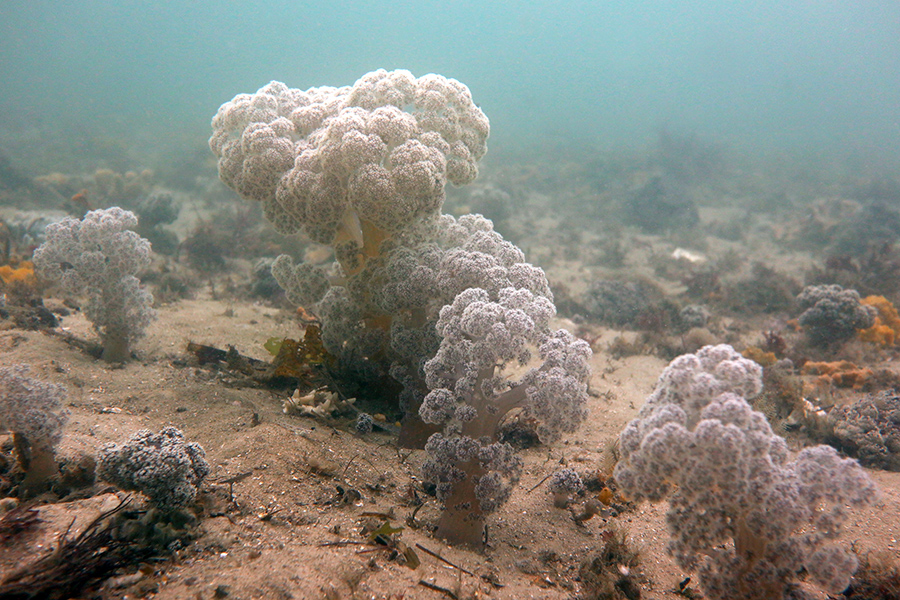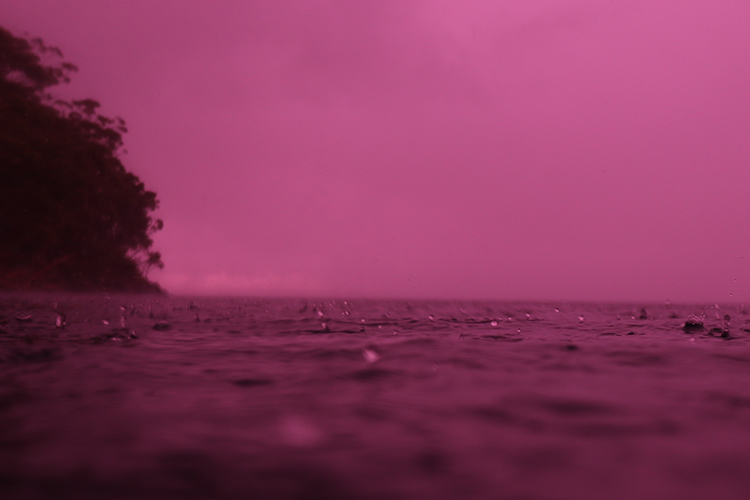Thoughts from a murky dive at the “Pipeline” site in Nelson Bay, after a couple of months away.
I’d left it, in late February, with a lot of octopuses in residence. I was coming across six or eight on each dive (probably more), and a lot of behaviors. Now, with the water cooling down, I wanted to come back and see what was happening. I think these octopuses become less active after March or so, certainly by the winter (with exceptions). At Jervis Bay’s “Octopolis” site, seasonal differences have seemed pretty clear: quieter when it’s cold.*
The conditions were rain and murk, and a very small high tide (around 1.26 m). I’d not usually dive the site on a tide that small; it needs plenty of ocean water coming in to push back the river water. But without many options to visit for a while, in I went.
I saw four octopuses in a long dive. They were quiet. I saw very few empty dens, too. I’m not sure if I was in exactly the same places as February, though I was close to them. The site seemed a lot less active, as far as octopuses go.
But I did notice something about the site’s soft corals.
These corals are a highlight of the site, and I’ve written about them often (from 2017 on). Around 2020 they started to die off, in a way that alarmed the experts as well as observers like myself. This seemed partly due to storms and floods around that time, especially in 2021, but the decline seemed to start earlier, independently. Now the site, including its corals, has revived (perhaps just in the last 12 months, though I was away for a while and missed the early stages). The corals are well and truly back.
The thing that struck me on this dive was their shape. Quite a few of the corals were higher and more tree-like than usual. Their nickname is “cauliflower corals,” and that is usually very apt, but on this dive, a lot of them looked more like stumpy and fairly well-defined trees.
Here’s a photo of how most of them tend to look, taken a few months ago. I think (am not sure) that this shows the sexual differences, with the female at the top. The cauliflower similarity is clear.
And here’s a photo of the tree-like form from the April dive:
Not all of them were like this, perhaps half, to various degrees. Others looked like the familiar cauliflowers.
I found myself wondering about these shapes, and the differences from how they (some of them) usually look. I suppose there are four possibilities, not entirely exclusive.
- I’m wrong to think they were much different on this dive (I was misremembering them).
- The returning generation is a little genetically different from the ones who were around before.
- It’s a developmental or a life-stage difference. These coral colonies are younger, and the tree-like form is what you see at that stage.
- The difference is behavioral, a response to momentary circumstances.
Some of the tree-like ones definitely looked small, probably younger, as in option 3. But not all did, or not markedly so. And they might have been young and doing something along the lines of option 4. Here is what I have in mind.
Although these corals are entirely still as one watches them (the polyps don’t reach their fingers visibly through the water, as some others at a nearby site do), a research paper from a few years ago by Tom Davis, Dave Harasti, and Stephen Smith found that when the tide is running fast, the corals extend their bodies high, up to three times the height that one sees on slack-tide dives. This, they think, helps them catch food running past in the faster water. When the water slows and stops, there’s less food and the corals sit back and rest.
Given this, I wondered whether the very low high tide that I was diving on, and the generally murky water, were encouraging the corals to do something they’d not usually do – reach higher for food on the slack tide, holding their bodies up a little. As I said above, I’d never usually dive the site on a high tide this small, and the water was murky from storms over the previous day or so.
So: had the corals kept their higher stance because the water had been slow during the incoming stage? Had they caught less food at stage than usual, and were hanging round the buffet now? Did they sense that there was more food in the water during the slack stage of the tide than usual? Was it several of these?
Here is a pair of video screenshots from the paper by Tom Davis, Dave Harasti, and Stephen Smith, showing the dramatic change in height.
 It’s impossible to dive while the tide is running; they left cameras at the site with large batteries.
It’s impossible to dive while the tide is running; they left cameras at the site with large batteries.
I said above that some of the tree-like corals did look young (option 3). Here’s an example:
Others seemed more substantial, less likely to be juvenile, like the big one in the middle here:
I am going to ask Meryl Larkin, Soft Coral Queen, what she thinks, and I’ll post an update.
As with some of my other recent dives, the end was memorable. As I came up to the exit, the light – already dim – suddenly got much, much darker. It was quite spooky, as I could not see well at all. When I put my head out of the water, rain was crashing down. A storm had suddenly appeared over the site.†
___________________________
Notes
The Davis et al. paper includes a video, here:
Regarding the claim about food capture:
[F]or suspension feeders, the ability to increase in size in response to increased current flows, as exhibited by D. australis in this study, positively impacts on particle capture by: spreading polyps over a larger area; reducing overlaps between polyps; and locally reducing currents increasing food retention rates…
* Octopuses are cold-blooded animals, so it would make sense that they’d be quieter when the water is colder.
† That photo is straight out of the camera – it shows how heavy the red adjustment I use at this site is. On the same theme: because the water was so murky this day, I’ve done fair bit to the photos in this post to make them clearer. Here is how the second-last photo looks with that underwater red enhancement in place but no other adjustments.


